One of the most common mistakes with LED strip lights is assuming that they always run cold.
While LED light strips are generally much cooler than older lights, such as incandescent bulbs, they still get hot – especially in the cramped spaces where we like to install an LED light strip.
LED light strips need heat sinks, or channels, to absorb the heat away from them and dissipate it back into the surrounding air. Without this, LED strips can quickly lose optimum performance. The best heat sinks are made from aluminium alloys and need to match the size of the LED strip.
In this guide to LED strip light heat sinks, I’m going to cover the following:
- How warm (or hot) LED strip lights can get
- How to reduce the operating temperature of your strip lights
- How to size your heat sink for your LED strip lights
- Whether aluminum is the best material for a heat sink
How Hot Do LED Strip Lights Get?
High-power LED strips typically get about 20-30 degrees Celsius hotter than the surrounding ambient temperature. This means that if the room is around 24 C (75 F), the temperature reached by the high-power strip can be around 54 C (130 F).
LED strip lights give off up to 90% light energy and only 10% heat energy, depending on the quality of the strip. They’re one of the best light source options in terms of energy efficiency.
However, low-quality strip lights can perform much worse, with up to 40% of energy wasted as heat and only 60% converted to light energy.
The output varies due to the LED bulb’s quality, the wiring, and the internal components used.
Whether you’re looking at the actual temperature or the heat energy output, it’s clear that this is a lot of excess heat, and that’s a problem.
Too much heat will result in lower light output, changes in colors, or a drastic reduction in lifespan.
Indeed, if heat is not carried away from an LED, the glorious 25,000 hours of lifespan can quickly come down to 10,000 or even fewer hours.
Worse, the heat can eventually become a fire hazard in addition to prematurely ending the LED’s life.
It’s the same with any LED bulb. Sure, old incandescent light bulbs are much worse for the heat produced, but that doesn’t mean you can get complacent with your LED strip lights.
How Does LED Strip Heat Dissipation Work?
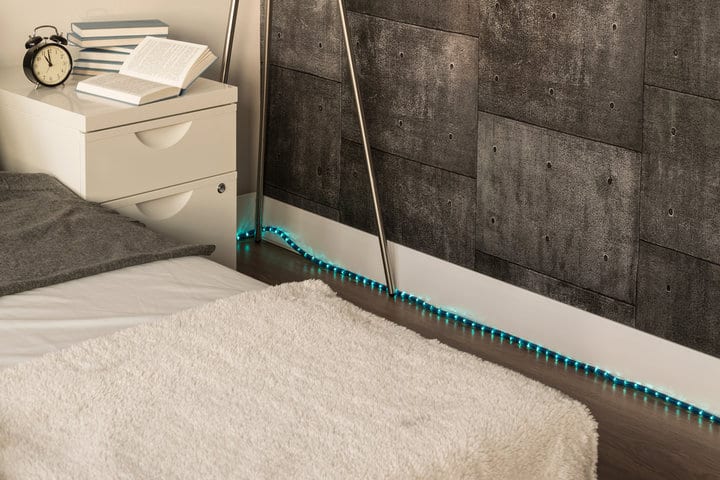
Heat dissipation for LED light strips is simple – a conductive material is used to carry heat energy away from the LED lighting, transferring it to the ambient air. It cools the LED strips by removing the heat.
Therefore heatsinks themselves may feel hot to touch too, but that’s because they’re doing their job well.
The heat generated by the LED light strips is transferred to places where there is less heat around. This improves the life span of the LED strip, eliminating the risk that it’ll lower its lifespan or catch fire.
How To Reduce Heat From LED Strip Lights

There are several ways to reduce the heat from LED light strips. You can:
- Install them where there is good airflow
- Take measures to reduce the ambient temperatures
- Ensure a suitable power source is being used
- Install a new heat sink
Getting a heat sink installed is the best option, so I’ll detail those steps below. But I’ll quickly touch on the other steps first.
Good ventilation can help to improve the lifespan of your strip light. It will help to lower the temperature by carrying heat away from the strip naturally.
You can take other measures to lower the ambient temperature too. Make sure you don’t install LED light strips in a room that tends to overheat anyway. Use fans or air conditioning if the room does get hot, and install them away from radiators.
Also, check the power supply. If it’s an old power supply, then the electrical energy provided may fluctuate, which can cause the light trips to overheat.
Choosing The Right Heat Sink For Your Light Strips
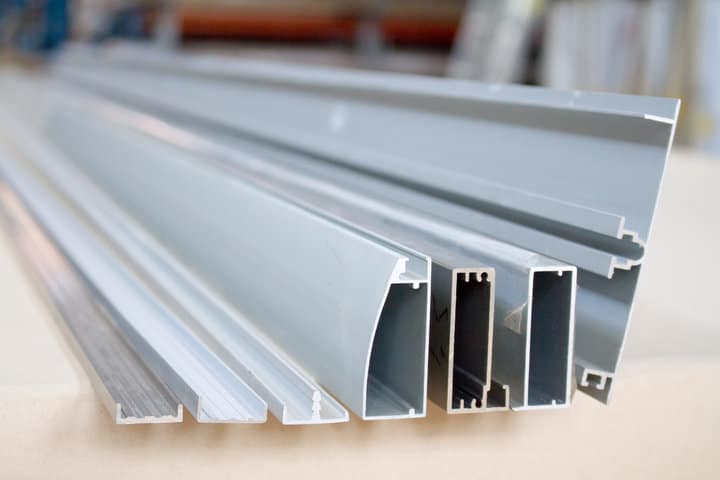
There are a few factors to consider for the installation of your heat sink. You need to look at the size of the channels you’re choosing, the right materials, and the profile of the heat sink.
How To Size LED Strip Heat Sink?
There are three main LED strip widths. The standard width of most LED strips is around 10mm, and for those, you’d need a 13mm heat sink. Generally, you need a heat sink that’s a few millimeters wider than the strip itself.
Here are some example LED strips sizes that are available in the market, and the required heat sink sizes you need to accommodate them.
| Width of LED strip in mm | Appropriate width of heat sink in mm |
|---|---|
| 8-10 mm standard width | 13 mm |
| 12-15 mm double row | 18 mm |
| 27 mm ultra wide | 30 mm |
If you are running an LED strip that requires more than 350 mA, then a heatsink is required. One single high-powered LED gives off about 1-watt.
Some heat sinks come with application guides for the LED strips. These are lines that allow the insertion of the strip.
Is An Aluminum Heat Sink Best For LED Strips?
Aluminum is the best choice for home strip light setups – specifically the aluminum alloys 6060 and 6063.
That’s because:
- It’s a soft material that can be extruded, so it can be shaped without high costs during manufacturing
- It’s lightweight, so it’s practical for use around the home and can be fixed in place easily
- It’s the most cost-effective solution for LED strip lights, around a third of the price of copper
Copper and aluminum are the two main choices for metals to cool devices, but for the reasons above, aluminum is typically chosen for home LED lighting setups.
The aluminum material helps the strip light to cool down in three ways:
Conduction occurs first: heat transfers from solid (LED strip) to solid (aluminum heat sink).
After that, convection happens: heat is dissipated from solid (LED strip) to the flowing air.
Finally, radiation does the last part: the infrared radiation of heat transfers between two bodies at a temperature gradient (from warmer LED to the cooler heat sink).
For industrial-grade, diamond heat sinks are used for laser diodes, but this will be a bit of an overkill in a home setup!
Heat Sink Profiles
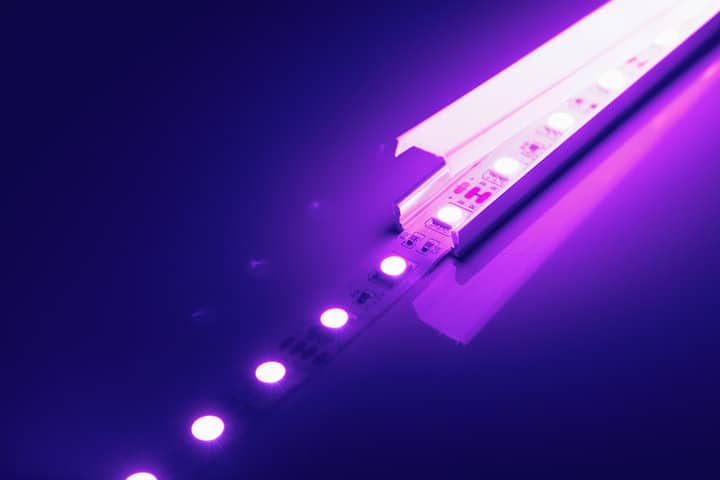
The profile or shape of a heat sink only matters when it comes to deciding where your light strips will be installed. Choose the right one to suit your setup.
They are often very simply shaped, such as a flat thin aluminum strip called a channel, which does the job well. Some of these channels come with diffuser covers to give a more ambient light effect.
If you need a more angled light direction, some heat sinks come in a V-shape that can easily fit into a wall and ceiling corner.
Final Words
Now that you have a fair idea of the risks associated with overheating LED lights, and in particular strip lights, you can decide where to place them and what kind of heat dissipation equipment you will need.
Make sure you have good airflow and are using wide aluminum channels to help your LEDs last longer.
After all, you don’t want to put your pets and kids at risk by letting your strips get too hot and potentially catch fire, do you?
And hot temperatures are one of the reasons light strips can have different colors – check that guide for other tips if you’re worried your strip lights are damaged.

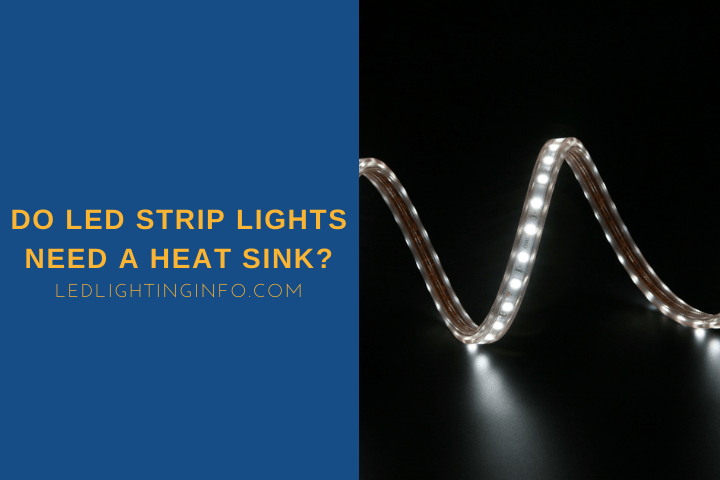

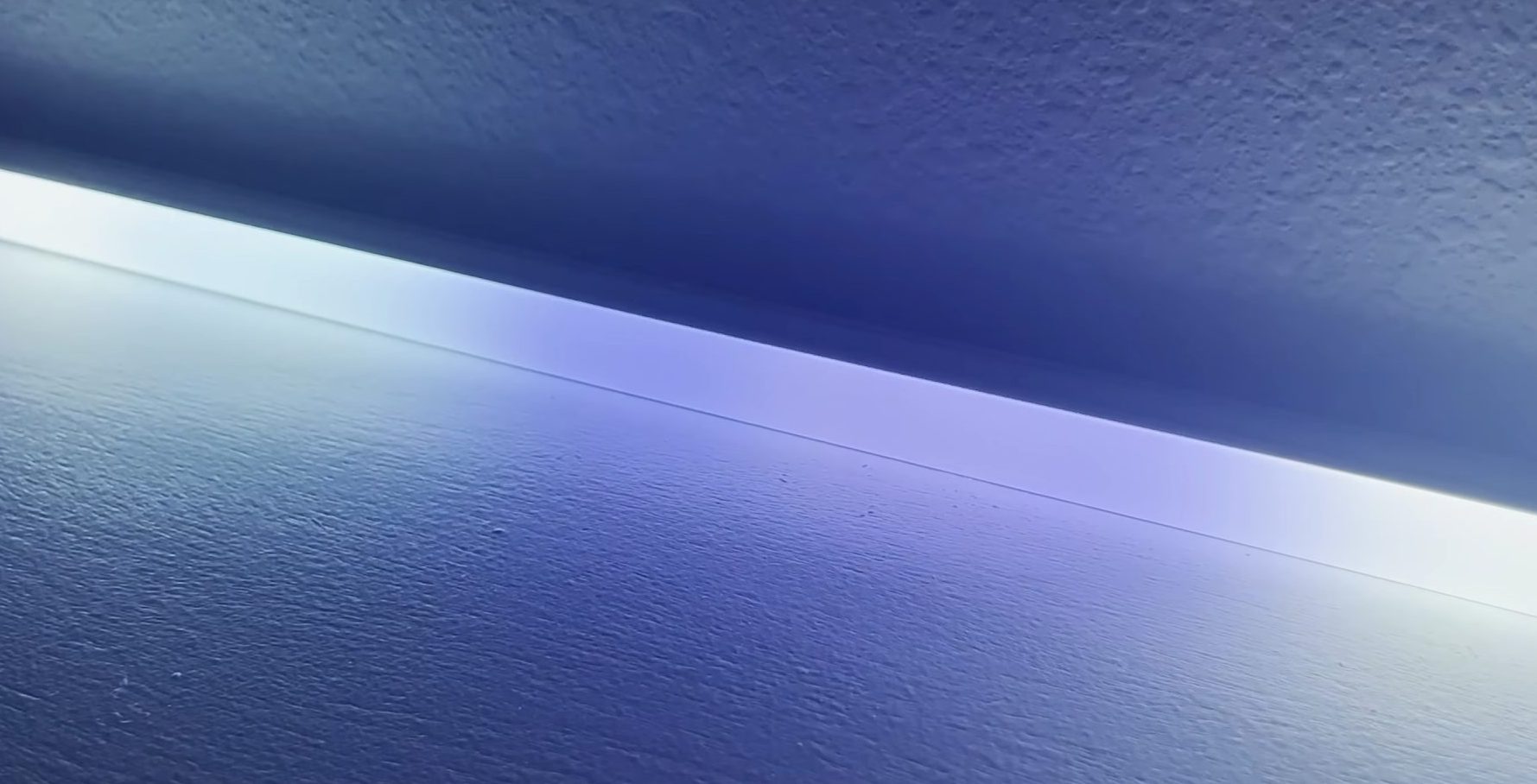
Comments are closed.